The Difference Between Ceramic and Porcelain Tiles
Date: September 12th, 2016 CTD Tiles
| Tags: ceramic tiles, porclain tiles, tile trend, bathroom tiles, bathroom design, wall tiles, floor tiles, floor and wall tiles, tiles for bathroom, porcelain floor tiles
Many people wonder what the difference is between the two most common forms of tile – ceramic and porcelain – and it’s no wonder with their similar appearance. Don’t let this fool you though, as there are many differences between the two tile types including PEI ratings, through bodies and weight.
Puzzled? Don’t be! Let us shine some clarity on the battle of the clays for you!
Ceramic vs porcelain tiles
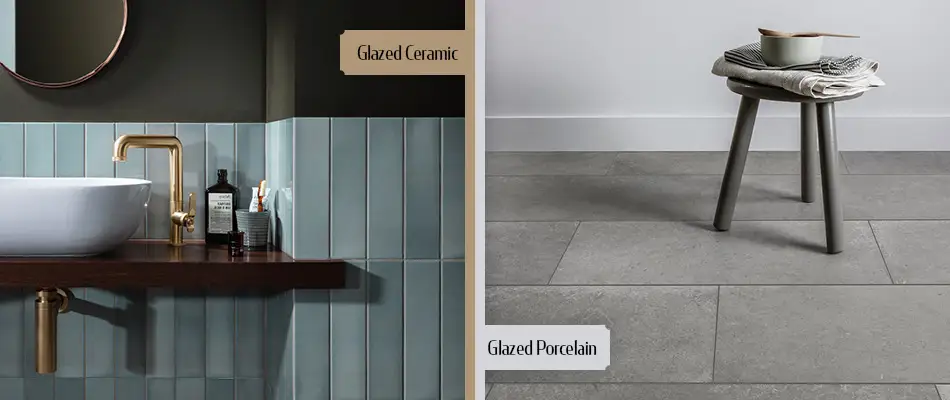
Porcelain tiles are denser than ceramic tiles, giving them hard wearing qualities suitable for both wall and floor.
Through body porcelain tiles in particular are known for their outstanding durability, therefore they have no Porcelain Enamel Institute (PEI) Rating, which describes how resistant tiles are to abrasion. However, glazed porcelain tiles gain a PEI Rating depending on how appropriate the tile is for a specific area. We’ll go into that further in this post.
Pictured above: Crackle (discontinued) and Realstone Rain
How to tell the difference between ceramic and porcelain tiles
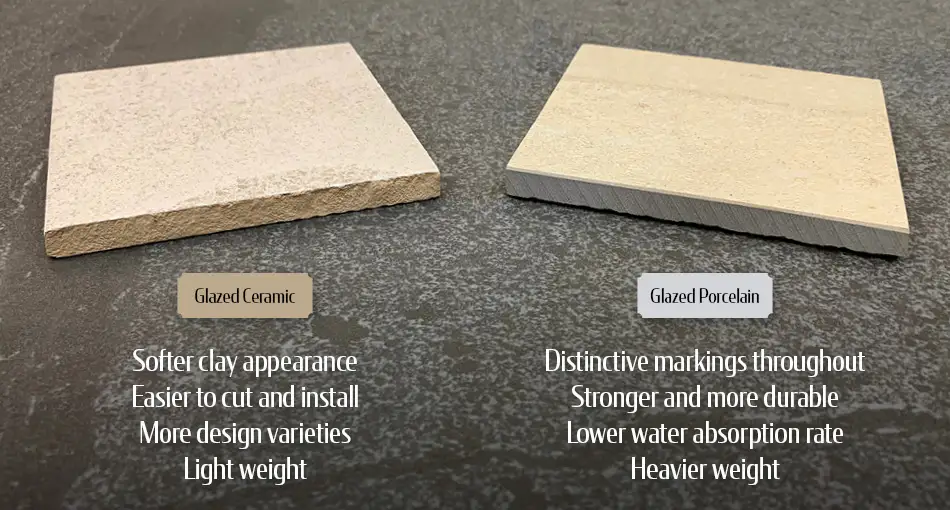
Despite their similar appearances, there are ways to tell the difference between ceramic and porcelain tiles.
For example, if you were to remove the top layer from a porcelain tile you would be able to see distinct markings from the first layer as they flow throughout the whole tile otherwise known as ‘through body’.
However, if you were to remove the top layer of a ceramic tile you would be presented with softer clay rather than the expected markings.
How ceramic and porcelain tiles are made
Porcelain tiles are made from dense natural clay. Once the mixture is ready, it is moulded and pressed into the desired shape and fired at an extremely high temperature and for a longer time to eradicate almost 100% of the moisture.
Ceramic tiles are created using a heated kiln after being shaped. The firing of the tile draws out moisture and helps the tile to form low weight qualities.
Benefits of ceramic
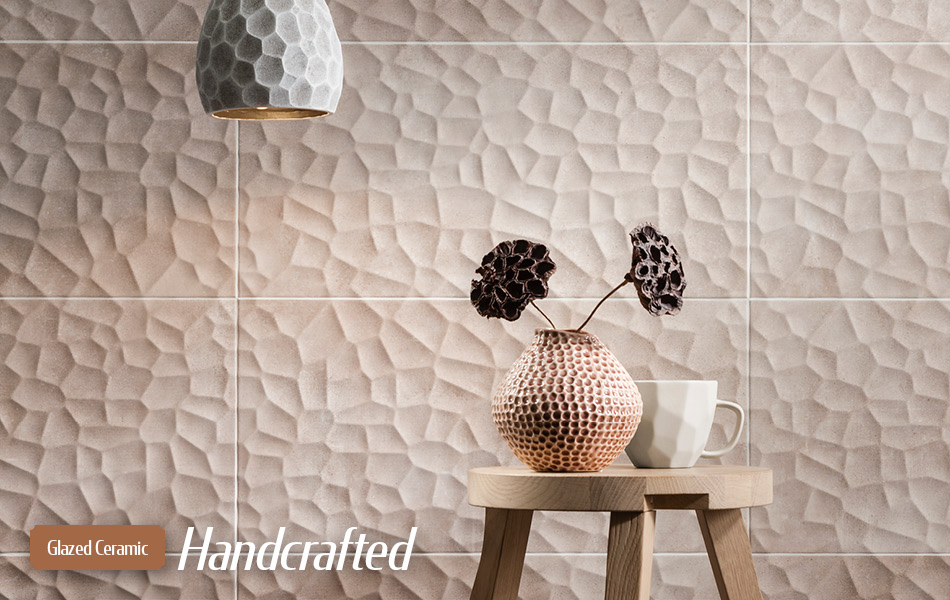
Ceramic tiles have many benefits including:
• Light weight, low maintenance and man-made qualities
• Functional and eye catching, ceramic tiles are perfect for both bathroom and kitchen splashbacks
• Ceramic tiles are more flexible than porcelain as they are a softer tile and therefore easier to cut
• The flexibility of ceramic allows for more creative designs such as the 3D decor tiles of the
Handcrafted collection
Benefits of porcelain
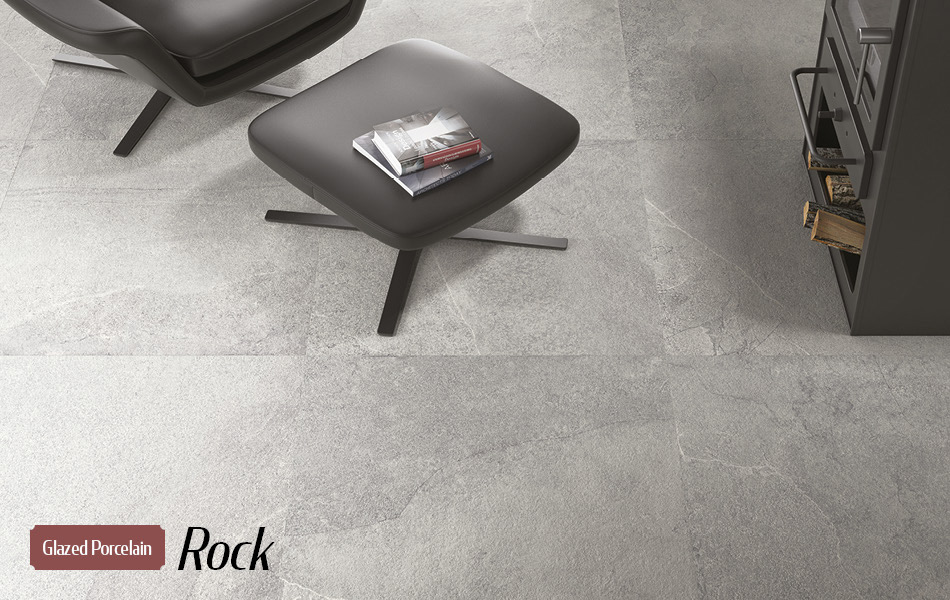
The benefits of porcelain tiles include:
• Heavy weight, making them a tough yet sophisticated option
• Porcelain tiles are known for low maintenance and man-made qualities, perfect for bathrooms, kitchens and living areas
Pictured above: Rock
Ceramic and porcelain PEI qualities
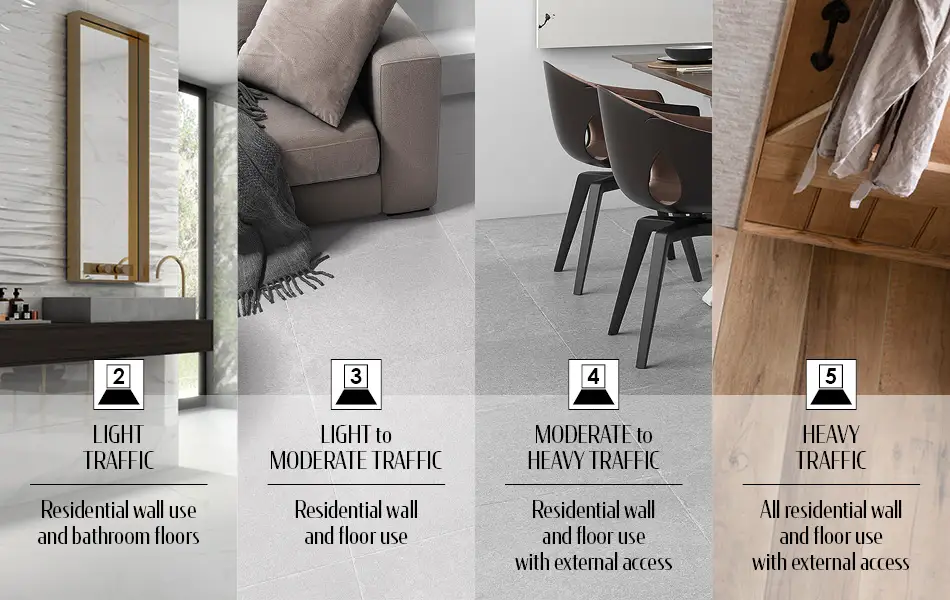
The construction and qualities of ceramic and porcelain tiles differ greatly.
One classification that affects where to use specific ceramic and porcelain tiles is called the Abrasion Resistance Porcelain Enamel Institute (PEI) Rating. The rating ranges from 0-5, with 5 being the toughest and 0 being … well, you guessed it... not as durable.
Below are the four most common classifications which you will see when shopping for tiles on our website and in our showrooms:

- Light traffic. Residential wall use and bathroom floor applications.

- Light to moderate traffic. Residential wall and floor use.

- Moderate to heavy traffic. Residential wall and floor use with external access.

- Heavy traffic. All residential wall and floor use with external access.
Taking the above classifications into consideration when choosing a tile for your project is key to a successful outcome.
Typically a porcelain tile will receive a rating from 3-5 and a ceramic tile a rating 3 and under – you can find this rating on our showroom labels and next to products on the website. You should also note that this is normally applied per tile, some colouring can affect the rating so always check each individual tile variation.
If you have any queries regarding PEI Ratings, please feel free to speak with a member of staff at your local showroom.
Bathroom tiles
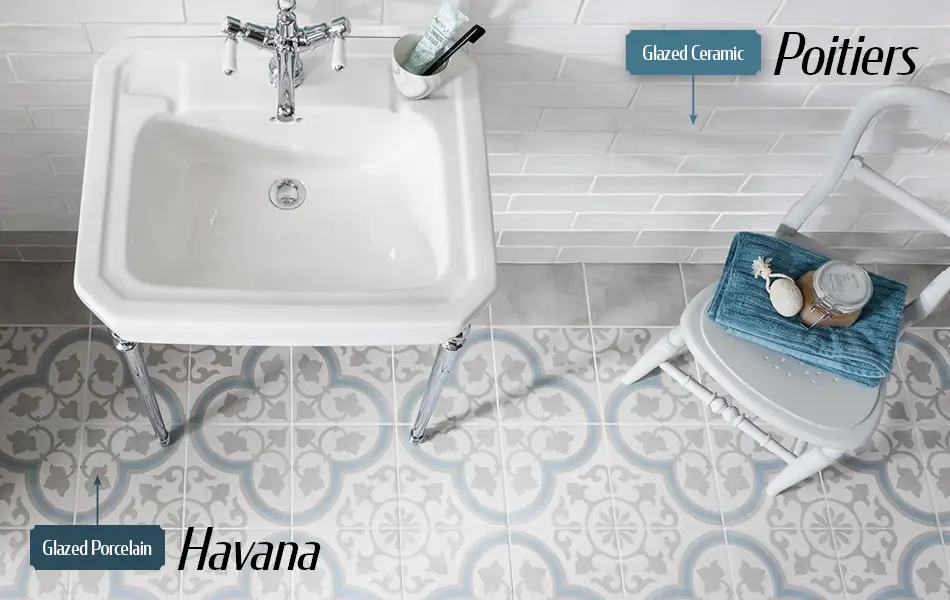
Pictured above: Havana and Poitiers
Are you working on a new bathroom project or perhaps you may be wondering what kind of tile to use for your next renovation? Have you already got your dream tile in mind? If so, have you considered all of the necessary checks before hand?
It is increasing common for customers to make their way into our showrooms with a chosen tile in mind only to find out that it is not suitable for their chosen room. Avoid disappointment with our top tips on where to use porcelain and ceramic tiles within the bathroom.
• We recommend using a porcelain tile for your bathroom floor for a water resistant, durable room foundation. However, selected glazed porcelain tiles can be used on feature walls.
• Textured tiles with anti-slip properties are ideal for wetroom floors as well as being great for underfloor heating. You might also consider matt mosaics with the extra grout lines to provide additional slip resistant properties. View our selection of wetroom floor tiles here.
• Ceramic tiles are perfect for bathroom walls as they are easy to lay and come in a range of co-ordinating colour variations.
• Always consider your surfaces. If you have a curved area, a small porcelain or ceramic tile may need to be used, however that can also mean more grout lines and less coverage.
It is a good idea to inform your tiler of any unusual design features before starting your project. Discuss tile options with a member of staff at your local tile showroom for advice on choosing a suitable tile for your room.

Make use of the helpful filters available at the top of the tile category pages to narrow your selection by tile type.
View Bathroom Tiles